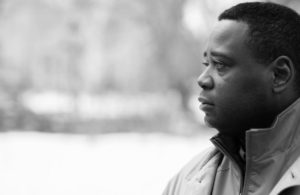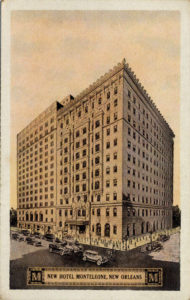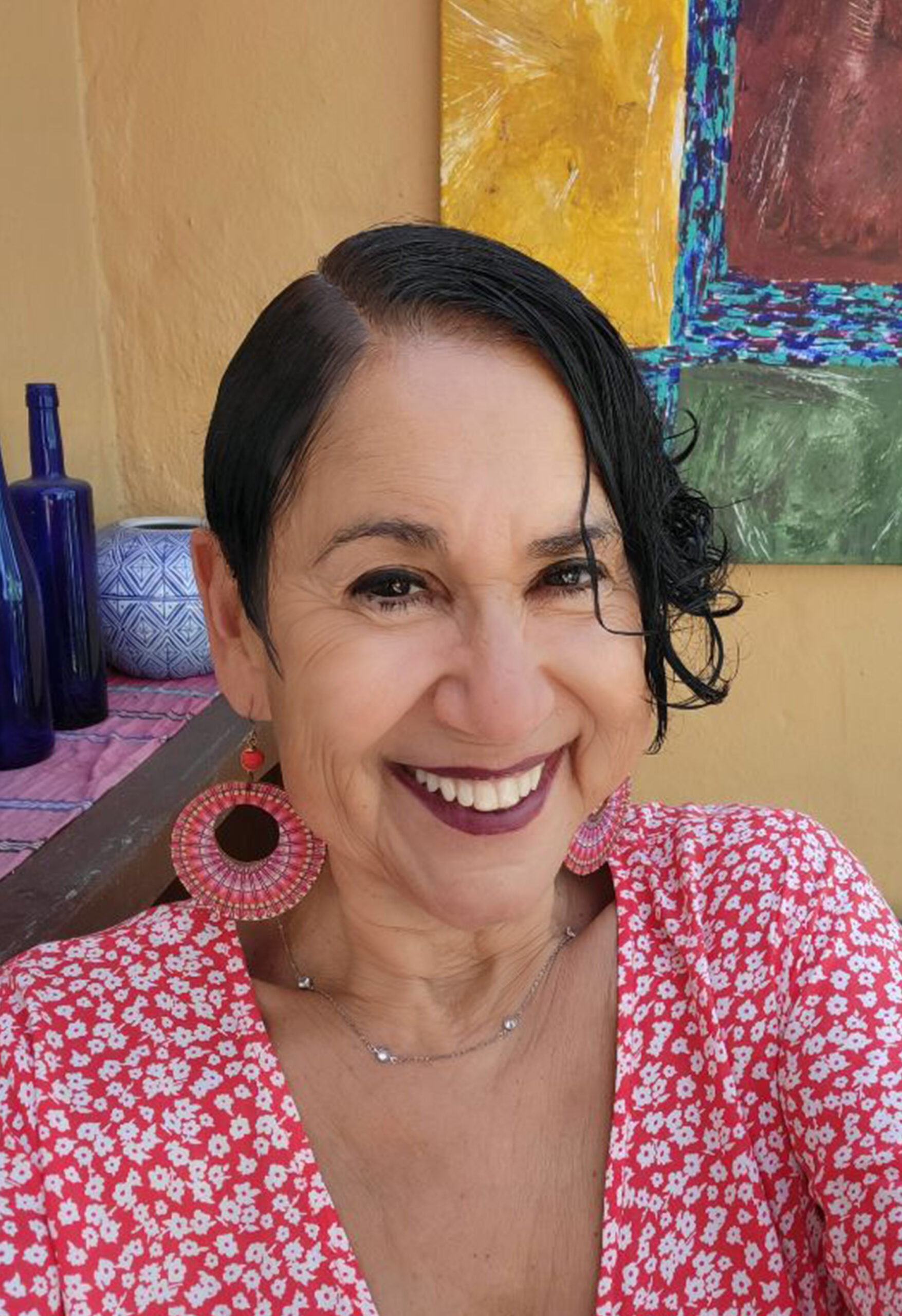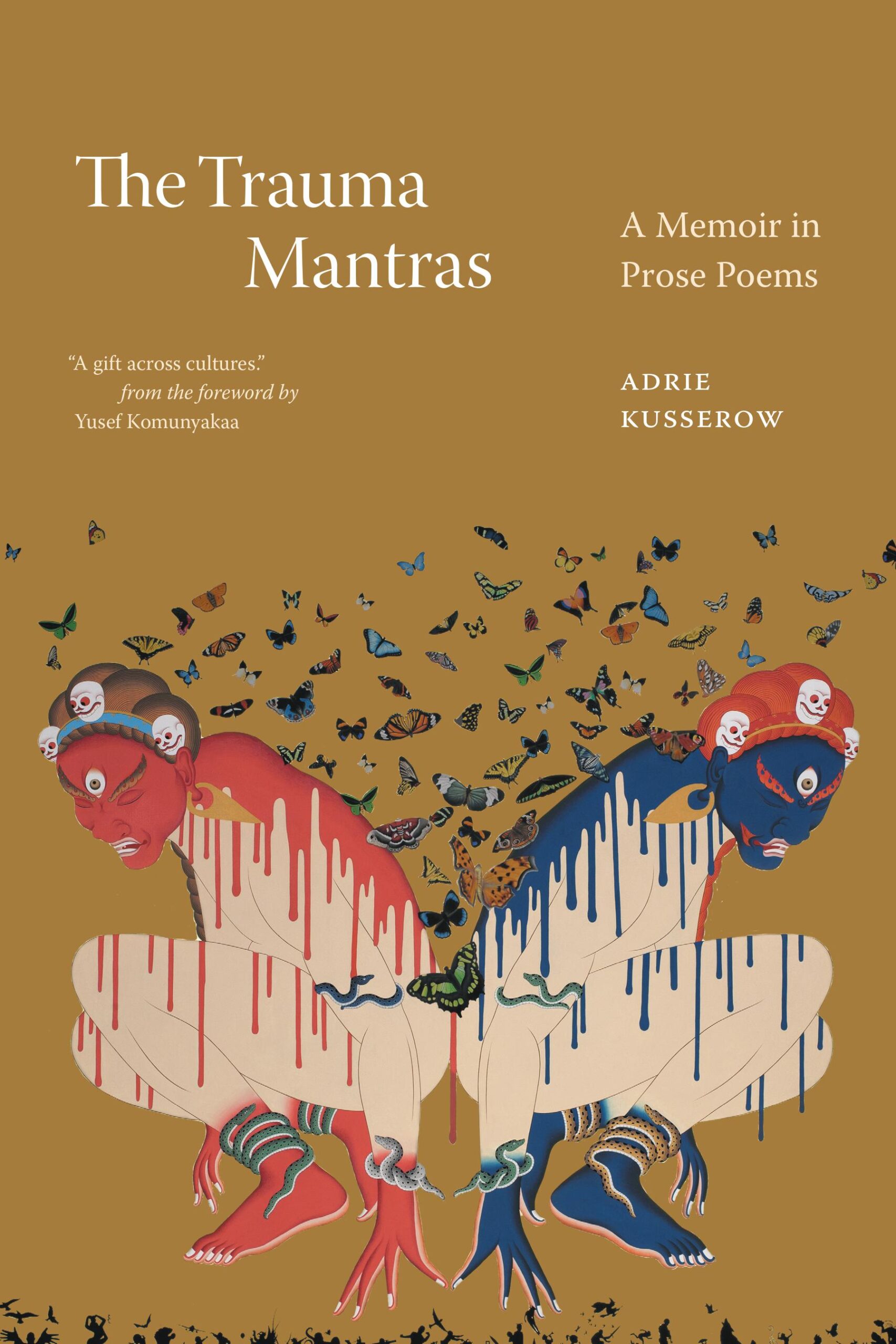SARETTA MORGAN interviews MAURICE EMERSON DECAUL

Maurice Emerson Decaul is a poet, essayist, playwright, and librettist, whose work has appeared in The Common, The New York Times, The Daily Beast, Narrative, Callaloo, and Holding it Down: The Veterans’ Dreams Project, among others. A graduate of Columbia and New York Universities, he is currently working toward his MFA at Brown University.
Saretta Morgan corresponded with Decaul over several weeks by email, in person, and on the phone during the winter of 2015–2016. Both poets and military veterans, Morgan and Decaul talked about New Orleans, theater, race, and the military, as their conversation moved between themes of structure, dreams, and collectivity.
Saretta Morgan (SM): I’ve only been down to Nawlins once, but your poem, “Crescent City,” which appears in Issue 10 of The Common, is rooted so firmly there that I could feel, as I progressed through your lines, that city, unmistakably, reconstructing itself around me. Can you talk a little bit about the context of your time there? What brought you? What struck you? What desires or fears were awakened?
Maurice Decaul (MD): I found myself in New Orleans by way of invitation. Brandon Willits, the founder of Words After War, reached out to me to ask whether I would be interested in being on a panel during the Tennessee Williams festival, held annually in New Orleans. I said yes. I had never been to New Orleans so the opportunity to visit the city excited me, but beyond that, myriad thoughts crossed my consciousness: Katrina, The Mississippi, The Louisiana Purchase, The War of 1812, slavery, the French, Spanish, African, Caribbean influence, Yusef Komunyakaa being born near there, tales of the Hotel Monteleone (where I would be staying) being haunted, the heat, the music, the Bacchanalia, the joy, the music, the wealth, the poverty, the spontaneity… so I was primed for something, maybe something spiritual to happen before touching down… that’s the context. I shared a car with Lauren Cerand, to whom the poem is dedicated, and Saeed Jones. We had flown together. On the ride from the airport, Lauren pointed out of the car to a cemetery and remarked how when she was a girl of six, she asked her mother, who is from New Orleans, to tell her something about her city. Her mother said “in my city, we bury our dead above the ground.” What a great line. That’s when the poem started for me.
Later, in the French quarter, walking around, I noticed the similarity of the buildings to buildings in Kingstown, St. Vincent, where I was born. The atmosphere of the place, the smell, the vibrance, the frenetic jostling of peoples reminded me of home, the original home in the Caribbean. New Orleans reminded me of home and in that moment, I believe I gave myself over to the city. I am not intending to describe nostalgia… it’s something else, maybe a recognition, something less ordered than my life in New York and now New England… I felt at home and closer to my true self and that is freeing. And therein lies the danger for me. I am reserved, but I know that would fade in New Orleans… I would succumb to everything mentioned above and I am not sure I am prepared to handle that… the history, the energy, the ghosts.
SM: Given your attention to the architecture and the rhythms of New Orleans, I wonder if there was anything in particular there that may have influenced your formal choices in this particular poem, “Crescent City,” or in other works?
MD: This is a compelling question. I often aim to seed my writing with moments of ambiguity. One thing that I am close to being sure about is there is no definitive truth, and that truth and untruth, right and wrong, exist on a scale, which is measured by the actor, the person being acted upon and within the context of norms and mores. So New Orleans for me felt like a place where I could find myself lost if I allowed myself to become lost. What I mean is [that] for “Crescent City,” the form came to me in an organic expression of spoken poetry. I had tried to write the poem on a page, but failed. It wasn’t until I sat on a chair and looked out my hotel window at the city and the river and opened my mouth did the poem come. I didn’t write it as much as speak it into existence. It came out of my mouth and onto the page very close to the way the reader will read it. The place itself upset my normal writing process and the form—if there is one—is a reflection of my walks, conversations, and reflections on finding a place I felt like I already knew.
SM: What is it, for you personally, about being able to see and acknowledge where you’ve come from that you find—to use your word—freeing?
MD: For me [it’s freeing to know] that when I say America I mean more than the United States. I grew up here, but I was born and have lived in the Caribbean. America to me means the continuum of land mass from pole to pole. Being Caribbean and identifying and recognizing America through this lens gives me a much more internationalist perspective because I feel as though I am a citizen of America and I would find a way to make a life whether in the north, central, or south of our super continent. This knowledge to me is freeing. My family and I are after all immigrants to the United States and the sense of searching and discovery, the romance of picking up and moving, have been passed to me. In a way I feel transient, and I am increasingly more open to the idea of picking up and moving somewhere new. That somewhere is not a defined place but is more ghostly. What I mean is that I am interested in eventually living in a place where the layer between modernity and my technology-driven, frenetic lifestyle could coexist with the more laissez-faire, relaxed parts of my personality. New Orleans sort of felt like a place where both were possible and not necessarily in conflict. Perhaps this is why I connected.

SM: I want to talk about connections, because it was a lovely image that you traced earlier: two poets and a woman from the world of writing voyaging together to a mysterious city of histories and ghosts. Can you talk a bit about the role of community in your work, or how it relates to your writing practice?
MD: Writing started for me at NYU’s Veterans Writing Workshop in 2009. I was an undergraduate at Columbia and I found the group by accident. At the time, I didn’t think of myself as a writer, but that group was very important to me. Most of the vets there had been to Iraq and Afghanistan, so there was something we shared, even if they were much more advanced in writing than I was.
After Columbia I received my MFA in poetry at NYU. The community there was very different. Most of my cohort hadn’t served. Perhaps there were two other veterans, and one of them had served in the Israeli Defense Force. What’s interesting is that for the most part, my concerns were very different from the group as a whole. Perhaps the age difference had something to do with this. But the program was full of excellent and engaged readers, and we were able to come together to support the work.
Now, I’m at Brown and finding myself in a transitional moment. Though we’re all working on plays, everyone here is approaching writing in very different ways. We don’t even have a definition of what a play is, so there’s lots of room to experiment. We’re allowed to play, which is, in a way, what learning is. I’m finding so many intersections and a lot of inspiration from different kinds of writing that I feel will be very influential on the future of my writing life.
SM: I’m going to switch gears a bit, because earlier this week I had the opportunity to attend a staged reading of your recent play, Dijla Wal Furat, Between the Tigris and The Euphrates at the 86th Street Armory. Your approach to the work felt very exciting. I often think of interiority as being something difficult to convey clearly through live theatre, where a character’s motives must be discerned through their actions. But in Dijla Wal Furat you’ve created a separate role to represent the interior landscape of one of the characters, thereby making his emotional state as directly available to the audience as it might be in poetry or prose. Can you speak about your writing practice and the relationship between poetry and theatre for you?
MD: Dijla Wal Furat is itself very poetic, being influenced by Edward Hirsch’sGabriel and Yehuda Amichai’s The Diameter of the Bomb. It was written mostly as a broken Terza Rima. I am not able to write plays without consulting poetry. For me playwriting is an extension of my poetry, but the plays allow me to explore human fallacy in a different way than I do with my poems. That has to do with the addition of live actors on stage who bring the written word literally to life. I’ve fallen in love with that. The plays I am thinking through now are being conceived through the lens of poetry.
SM: Can you talk more about this? How do you reach for poetry through playwriting?
MD: I focus on dialogue and traditional play structures, but poetry is in-built. I can’t write another way. I’m very conscious about how my lines move—how they look on the page. They look like poems and I do that on purpose. I’m conscious of the way the dialog moves. Sometimes a monologue is required, but for the most part I write very short lines, and I think of them as extremely poetic.
In the program at Brown, four of the six students consider themselves to be poets in addition to playwrights (we also have a composer and a professional clown!). I’ve been encouraging some of the other students to write books of poetry as well as plays. This is in part because it’s a way to reach another audience, but also because they are just such great poets. We talk about poetry as much as we talk about plays, and that is fascinating to me.
SM: That sounds like a very generative place to be writing from. When we spoke at the Armory, you mentioned another way in which Brown’s MFA is unique for you. It’s the first program you’ve participated in where conversations about writing have been explicitly grounded in race. How has this experience changed your relationship to writing (if at all)
MD: The experience of Brown is new for me. There exists on this campus and in my program a willingness to talk critically about structural racism and to take steps to address and correct what has been noted. I am still trying to locate my footing in these conversations but the discourse we’re engaged in is not happening in a vacuum—[it] is reflective of larger conversations in the field. With my own work, I try to write plays that reflect the communities that I know. So those plays will often have people of Caribbean descent in them. Entire scenes might be in Spanish or French.
SM: I respect your practice of allowing a culture to exist more or less within its own terms. From my own experiences as a service member, I wonder how possible it is to represent a range of characters in a military setting that feels true to your experience without using racist and sexist language. (One example might be the term “hajji,” which is used frequently and easily by U.S. soldiers, especially while deployed, to refer to people of Middle Eastern and in particular Iraqi and Afghani descent.) Is it important for you to critique this language—and perhaps military culture by extension—even as you use it?
MD: Good question. I had a real difficult time using the term Hajji in Dijla Wal Furat. Most of the drafts were written without that word but in doing so I realized that I was being dishonest to the lexicon of the Marines and that this was a disservice to the play and to the audience. So I went back and edited it in. If you notice, the character Ortega refrains from using the term until much later when, in a moment of anger, despair, and frustration, it slips from his mouth. He immediately corrects himself because he knows the implication of that type of language. The characters do this throughout the play. At times they say the meanest, vilest things, but they self-correct as the war unfolds in front of them. They self-correct as they realize they are part of a machine that has laid the country to waste. They self-correct once they realize their roles [in that], and begin to feel remorse.
SM: In addition to writing about situations in the military, you write alongside other veterans. I’m thinking specifically about your work with the Holding it Down: The Veterans’ Dreams Project. Can you talk about that collaborative work?
MD: Holding it Down is the result of a Creative Capital grant awarded to composer Vijay Iyer. Vijay and [poet/performer] Mike Ladd wanted to examine post-9/11 America from the perspective of the dreams of people of color who have served in the Iraq War—not by just using their stories or regarding them as interview subjects, but by having their voices directly involved as collaborators. Mike found some of my work online and reached out to me. Dreams were selected because dreams are something ubiquitous; we all dream.
Holding it Down is a music and poetry collaboration. For the libretto Lynn Hill, who is an Air Force veteran, and I wrote poems based on our dreams. We had very different dreams. Lynn brought aspirational dreams that balanced the show—dreams of making a family, buying a house. Her contribution changed the tone of the piece.
Our director Patricia McGregor was also instrumental, as she brought shape to the production. The poems were not necessarily connected, but Patricia was able to find the themes and craft a narrative. It would be impossible to do this kind of work without so many of the people involved.
SM: What are your next steps with Holding it Down?
MD: The next show is in Philadelphia in April. The Kimmel Center there has been doing lots of engagement with vets in Philly, conducting writing workshops through Warrior Writers, a local veterans service organization. They’ve been meeting since October—coming together, writing their stories.
*
The Philadelphia International Festival of the Arts presents Holding it Down: The Veterans’ Dreams Project on April 22, 2016.
Maurice Emerson Decaul’s poem “Crescent City” appears in Issue 10 of The Common, and his poem “Street Music” appears in The Common Online.
Saretta Morgan is an MFA candidate at Pratt Institute. She lives in Brooklyn.
Photo credits: Image of Hotel Monteleone, New Orleans; Creative Commons. Headshot courtesy of author.



